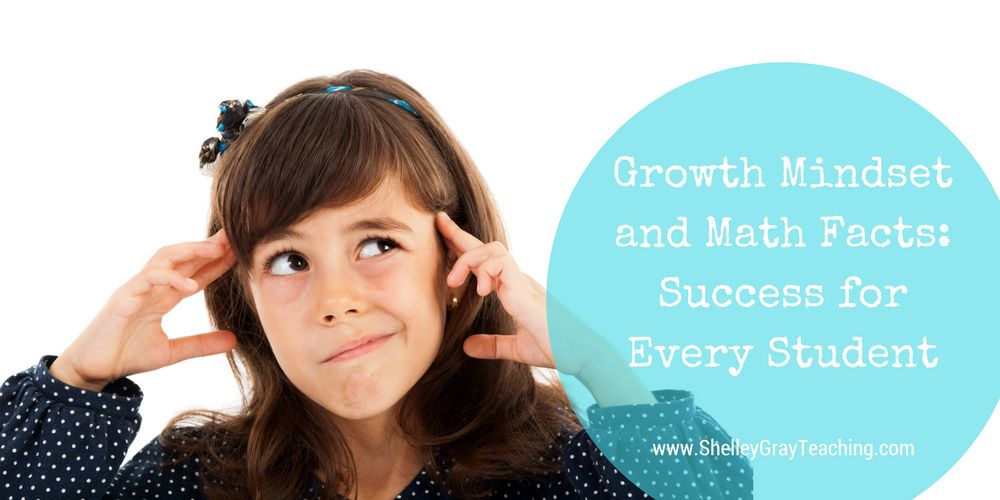
We hear a lot these days about growth mindset. We see it all around us on anchor charts, posters, and in the hallways. But growth mindset in the classroom has to be about more than simply telling our students that they can do hard things. We have to infuse the growth mindset into everything that we teach if we really want our students to develop and use it.
First of all, let’s discuss a few benefits of growth mindset. We know that students with a growth mindset rather than a fixed mindset are more resilient and more excited to learn new things and take on challenges. We also know that students with a growth mindset truly believe that they can get better at something through learning. Students with a growth mindset see mistakes as an opportunity to learn, rather than as a failure.
Simply having a growth rather than a fixed mindset can have a huge impact on student success.
However, we face challenges with the growth mindset when it comes to math:
- Parents often project their own attitudes about math onto their children. This happens all too often where children are told, “I was no good at math when I was in school either,” by a parent. This is projecting a fixed mindset onto the child, where he believes that because his mom/dad was not successful with math, he will not be either.
- Lack of success. Think about the students that you teach who hate math. Do they experience success on a regular basis? Do they see themselves as able to do the work? Growth mindset is all about challenging students to do difficult work and being motivated to do so. But we have to make sure that our students can be successful too. Success leads to motivation.
We can get past these challenges! Here are a few tips for infusing growth mindset into your teaching, particularly when it comes to math facts.
- Ensure that your students understand that their brain can grow stronger. Tell them, “Your brain is like a muscle. The more you use it, the stronger that it gets!” As your students succeed in areas where they used to struggle, point it out! Say things like, “All of your hard work really paid off,” “Can you tell that your brain is getting stronger in this area?”, or “Remember how hard the 9’s facts used to feel? Now they are easy for you! Your hard work and great attitude is really working.”
- Praise the effort, not the ability. Praising the ability, for example, “You are really good at math!” will encourage a fixed mindset. Praising the effort, for example, “You worked so hard to understand this, and you did it!” will encourage a growth mindset. Students will be more motivated to take on new challenges when they are praised for their effort.
- Keep your standards high, but still ensure success on a regular basis. Your students need to feel successful and able. You can do this by providing work that is achievable, but still challenging. When you teach multiplication, don’t begin with the hardest facts. Start with the easiest ones. Let your students know what it feels like to be successful. It’s a great feeling! Then you can increase your expectations once you see that they are ready for the challenge.
- EMPOWER your students. This can be done through providing lots of choice, and allowing students to be in control of their learning. Everyone loves the feeling of being in control of themselves, your students included!
Are you using Math Stations to teach math facts in your classroom?
If you are using any of my self-paced, student-centered Math Stations for basic facts, this is a great way to infuse growth mindset into your classroom! Growth mindset is built right into the stations (which is why students find them so motivating), but here are a few quick tips that will help you even more:
- When you do the oral test with a student, take a second to talk about the set of facts that she just finished. Did it feel challenging? Did it feel easier as she kept working at it? Did she do anything special to make that particular strategy or set of facts easier to learn?
- When a student is beginning to learn a difficult strategy, talk to him about how exciting it is to take on a new challenge! Remind him how past levels felt hard at first, but then got easier as he worked at it.
- Use effort-based praise. Rather than, “You are really good at the partial products strategy,” you might say, “I can sure tell that you have been working hard to understand the partial products strategy! You’re getting fast! That hard work is paying off. We are going to have to find you some more challenging activities to do pretty soon!”
- Have students use their personal tracker progress charts to see just how far they’ve come and think about where they are headed.






